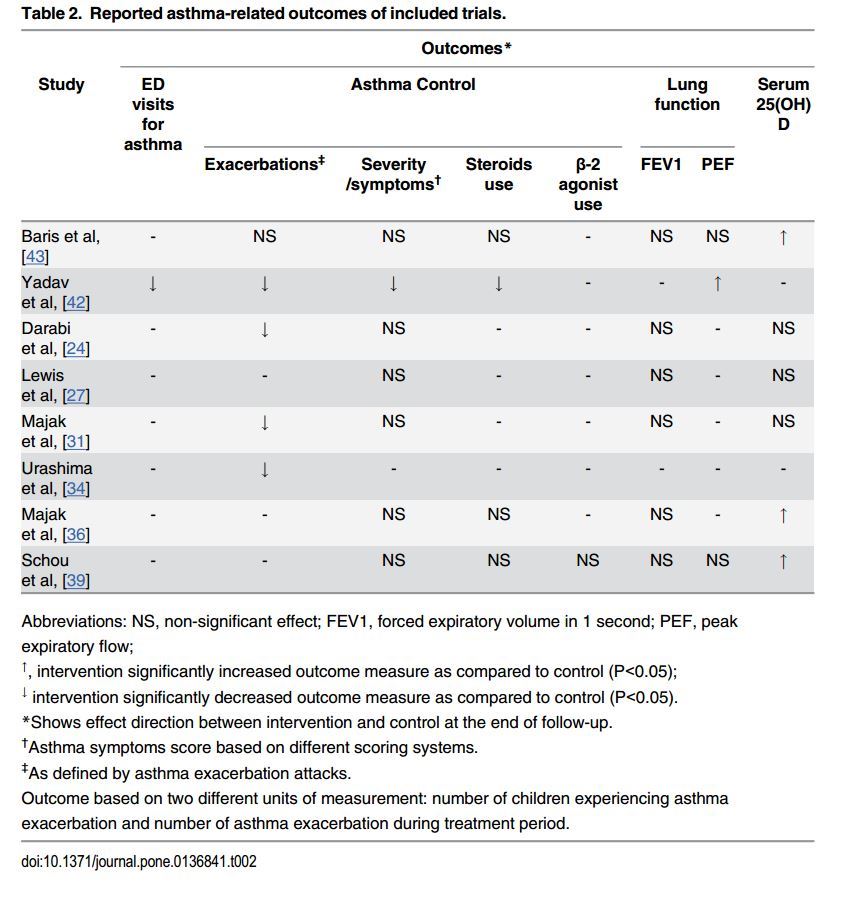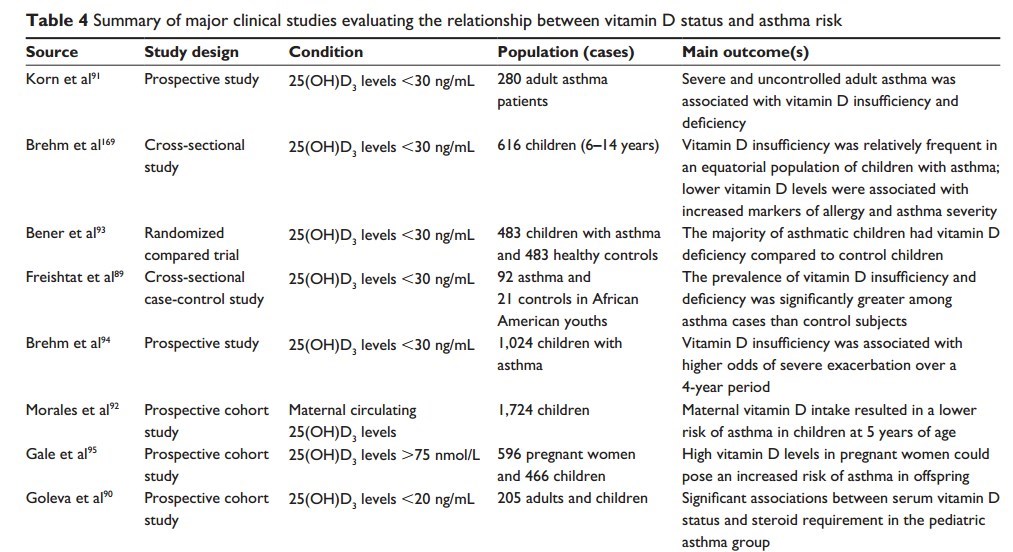Vitamin D and asthma – Review
Dermato-Endocrinology Volume 4, Issue 2 April/May/June 2012
Authors: Sheena D. Brown, H. Hardie Calvert and Anne Fitzpatrick
Abstract
Asthma, one of the most prevalent diseases affecting people worldwide, is a chronic respiratory disease characterized by heightened airway inflammation, airway hyperresponsiveness and airflow obstruction in response to specific triggers. While the specific mechanisms responsible for asthma are not well understood, changing environmental factors associated with urban lifestyles may underlie the increased prevalence of the disorder. Vitamin D is of particular interest in asthma since vitamin D concentrations decrease with increased time spent indoors, decreased exposure to sunlight, less exercise, obesity, and inadequate calcium intake. Additionally, a growing body of literature suggests that there is a relationship between vitamin D status and respiratory symptoms, presumably through immunomodulatory effects of vitamin D. This review discusses vitamin D as it relates to asthma across the age spectrum, with a focus on human studies.
Conclusion
There is a growing interest in the role of vitamin D in asthma and respiratory disorders across the lifespan. While several observational studies and a handful of small clinical trials suggest that vitamin D may be beneficial in asthma and wheezing disorders resulting from respiratory viral infections, findings are not consistent. These studies also differ significantly in terms of the populations studied, the timing of the vitamin D intake assessments and the 25(OH)D sampling, the 25(OH)D thresholds used for determining insufficiency, and the respiratory outcomes of interest. Because of the limitations of observational studies which include confounding by indication, definitive recommendations for vitamin D in subjects with asthma across the lifespan cannot be made.
Ultimately, randomized, double-blind, placebo-controlled studies are needed in asthma populations to sort out causal relationships between vitamin D status and outcomes and to develop recommendations for treatment. Further mechanistic studies are also needed to understand the mechanisms by which vitamin D exerts its effects both in healthy individuals and subjects with chronic inflammatory disorders such as asthma.
CLICK HERE for full text, graphics, and tables
Here are 2 of the tables


See also VitaminDWiki
See also web
- Low Vitamin D May Blunt Effectiveness of Asthma Treatment July 2012
- review of article printed in American Journal of Respiratory and Critical Care Medicine.
- RCT of 3 asthma drugs
